
Rules for drawing Ray Diagram in Concave and Convex Mirror Teachoo
The principal ray is defined as the ray emanating from an off-axis object point that passes through the center of the stop. In the absence of pupil aberrations, the principal ray also passes through the center of the entrance and exit pupils.
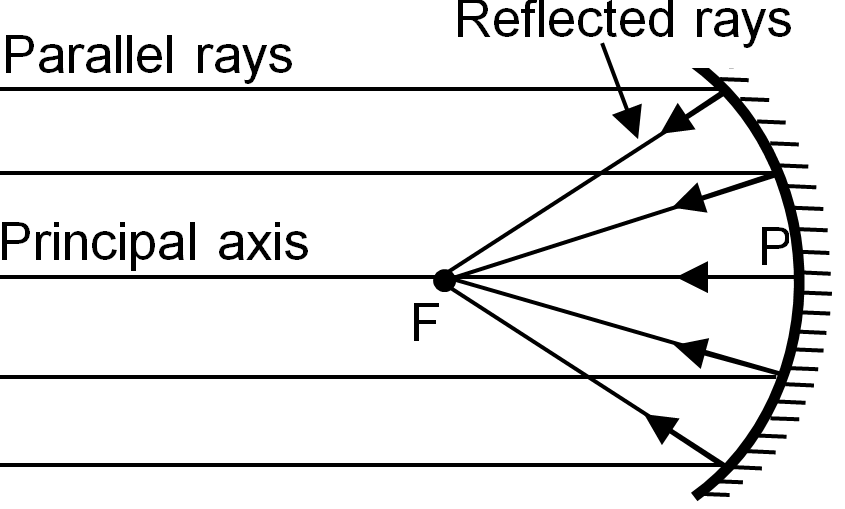
Draw ray diagram to show the principal focus of a Tutorix
A ray diagram is a tool used to determine the location, size, orientation, and type of image formed by a lens. Ray diagrams for double convex lenses were drawn in a previous part of Lesson 5. In this lesson, we will see a similar method for constructing ray diagrams for double concave lenses. Step-by-Step Method for Drawing Ray Diagrams
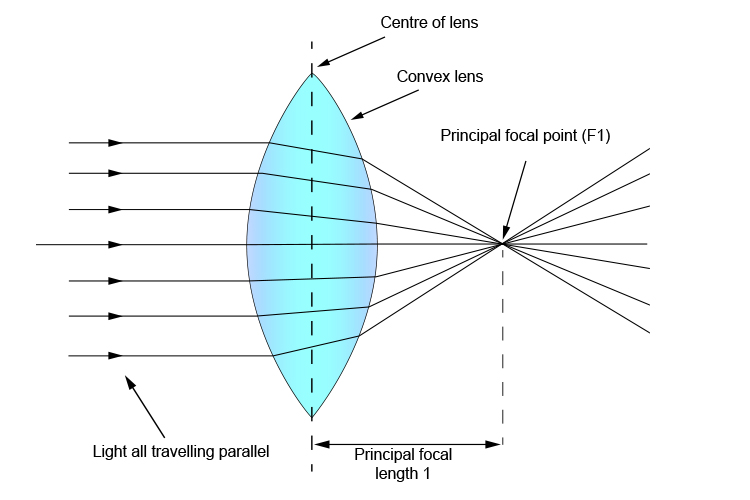
Principal focal length
Once through the lens, the ray should pass through the principal focus. Draw a ray which passes from the object through the centre of the lens. Some ray diagrams may also show a third ray.
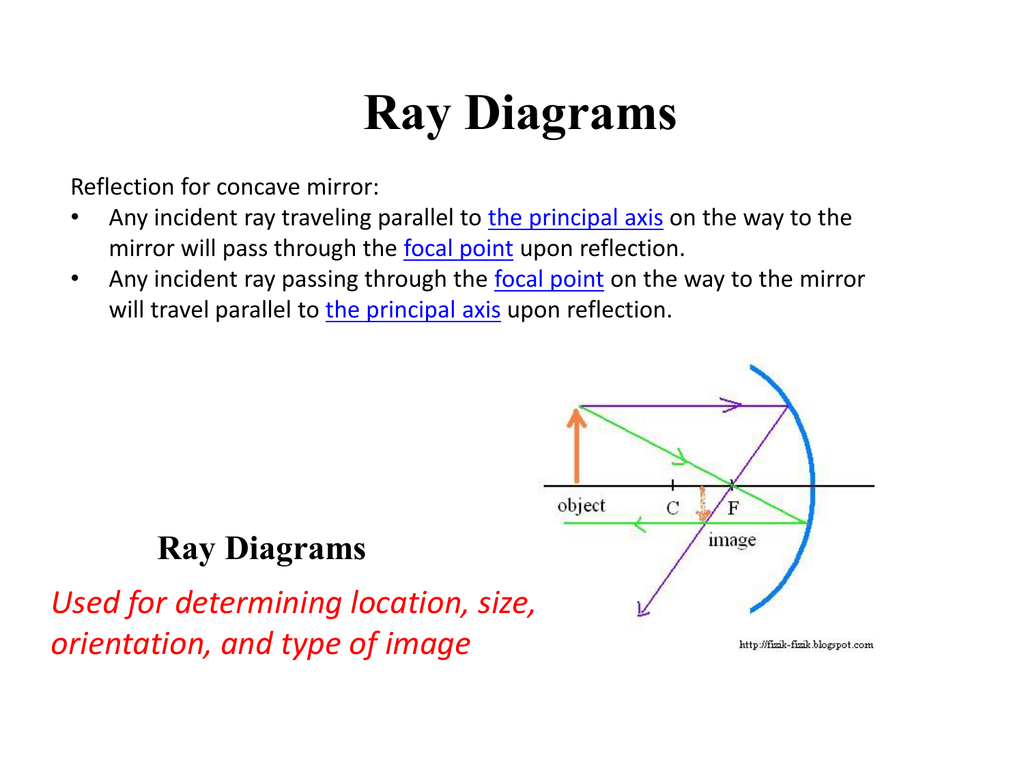
Ray Diagrams
Using Ray Tracing Diagrams; A lens is a piece of transparent material whose surfaces have been shaped so that, when the lens is in another transparent material (call it medium 0), light traveling in medium 0, upon passing through the lens, is redirected to create an image of the light source.. Principal Ray III, for a converging lens (with.
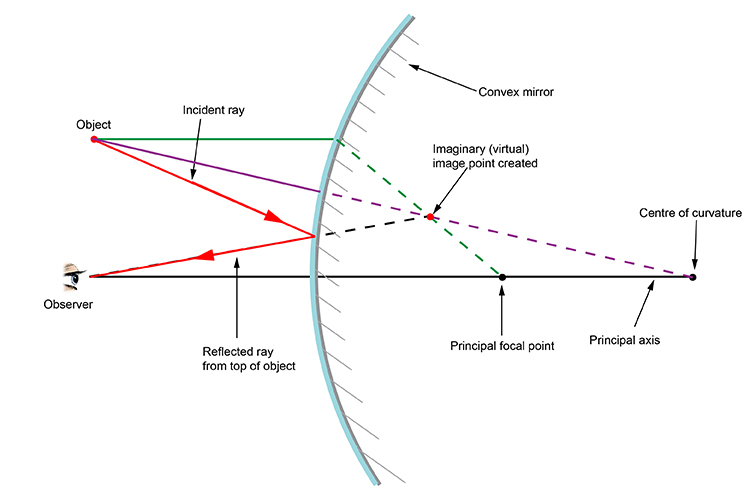
Convex Mirror and Concave Mirrors Ray Diagrams, Formulae 2023
A ray diagram is a representation of the possible paths light can take to get from one place to another. This is often from a source or object to an observer or screen.. The bottom of the object will sit on the principal axis, and the top of the object will sit above the principal axis. The object will be drawn as an arrow in order to make.

How To Draw Ray Diagrams of all time Don t miss out howtodrawimages1
Use ray diagrams and the mirror equation to calculate the properties of an image in a spherical mirror. The image in a plane mirror has the same size as the object, is upright, and is the same distance behind the mirror as the object is in front of the mirror.. (i.e., a virtual focus). Principal ray 2 travels first on the line going through.
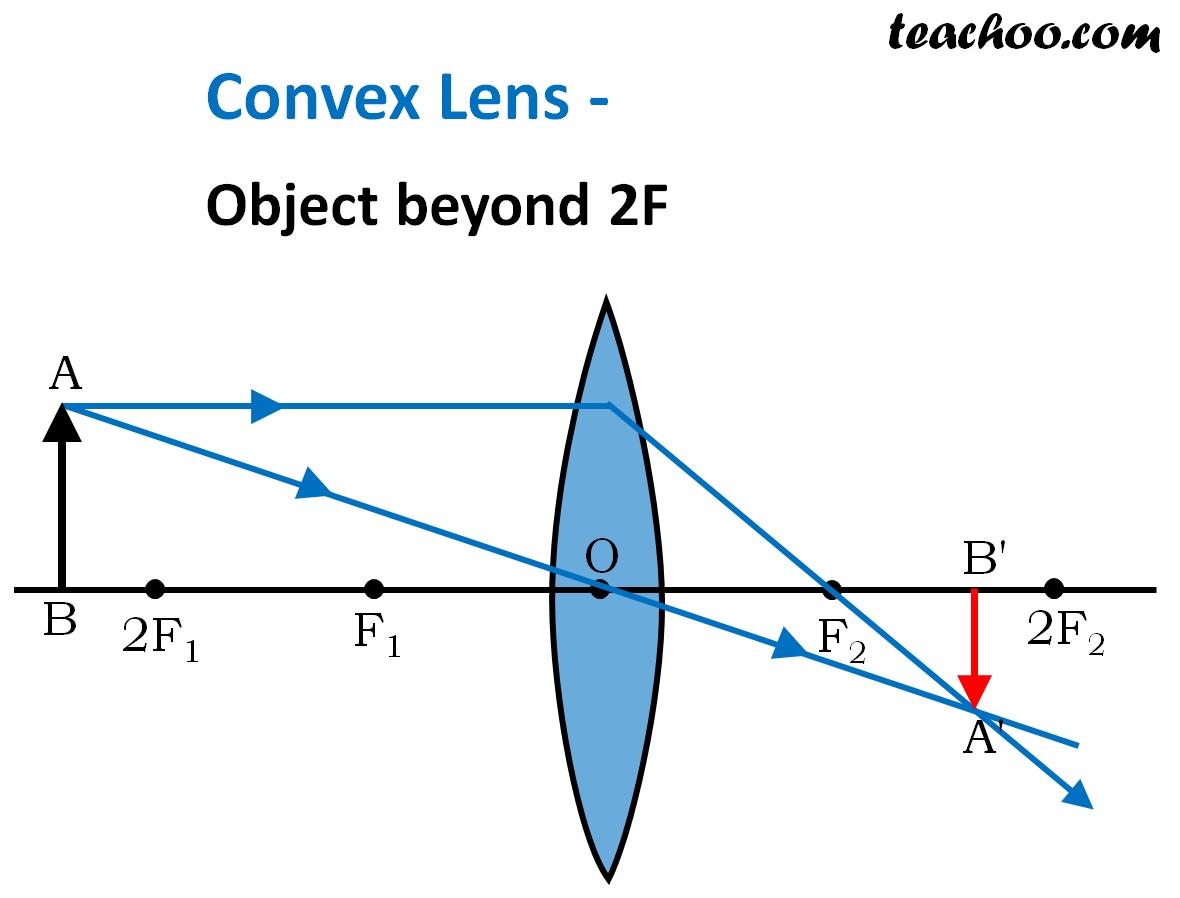
Convex Lens Ray diagram, Image Formation, Table Teachoo
This physics video tutorial on optics provides a basic introduction into ray diagrams. It explains how to draw ray diagrams for converging lens, diverging lens, concave mirrors, and convex.
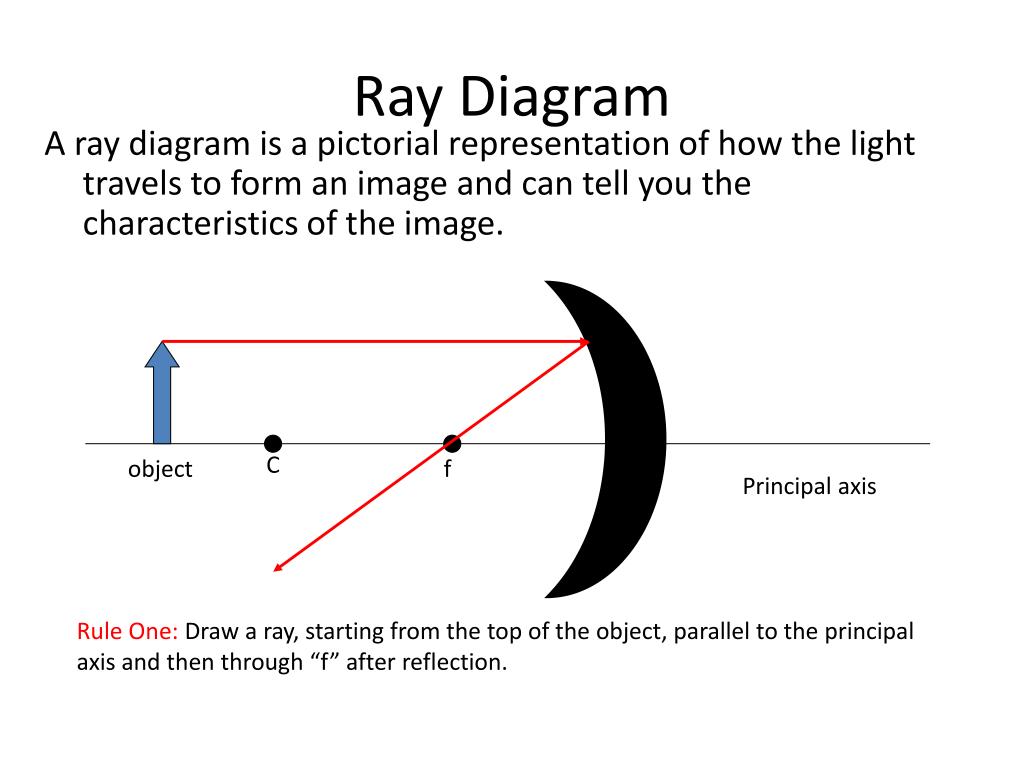
PPT Chapter 26 Geometrical Optics PowerPoint Presentation, free download ID438780
Diagram of rays at a surface, where is the angle of incidence, is the angle of reflection, and is the angle of refraction. An incident ray is a ray of light that strikes a surface. The angle between this ray and the perpendicular or normal to the surface is the angle of incidence.

Principal ray pattern in InI together with the firstorder sampling... Download Scientific Diagram
A ray diagram is a tool that is used to determine the location, size, orientation, and type of image formed by a mirror. Ray diagrams for concave mirrors were drawn in Lesson 3. In this lesson, we will see a similar method for constructing ray diagrams for convex mirrors. Step-by-Step Procedure for Drawing Ray Diagrams

Rules for drawing Ray Diagram in Concave and Convex Mirror Teachoo
Previously in Lesson 5, ray diagrams were constructed in order to determine the location, size, orientation, and type of image formed by double concave lenses (i.e., diverging lenses). The ray diagram constructed earlier for a diverging lens revealed that the image of the object was virtual, upright, reduced in size and located on the same side of the lens as the object.

Convex lens principal rays YouTube
1. Pick a point on the top of the object and draw two incident rays traveling towards the mirror. Using a straight edge, accurately draw one ray so that it passes exactly through the focal point on the way to the mirror. Draw the second ray such that it travels exactly parallel to the principal axis.

[DIAGRAM] Practice Drawing Ray Diagrams
Ray Diagrams for Lenses. The image formed by a single lens can be located and sized with three principal rays. Examples are given for converging and diverging lenses and for the cases where the object is inside and outside the principal focal length. The "three principal rays" which are used for visualizing the image location and size are:

Convex Mirror Ray diagram, Images Formed with Steps Teachoo
Use ray diagrams and the mirror equation to calculate the properties of an image in a spherical mirror.. Principal ray 2 travels first on the line going through the focal point and then is reflected back along a line parallel to the optical axis. Principal ray 3 travels toward the center of curvature of the mirror, so it strikes the mirror.
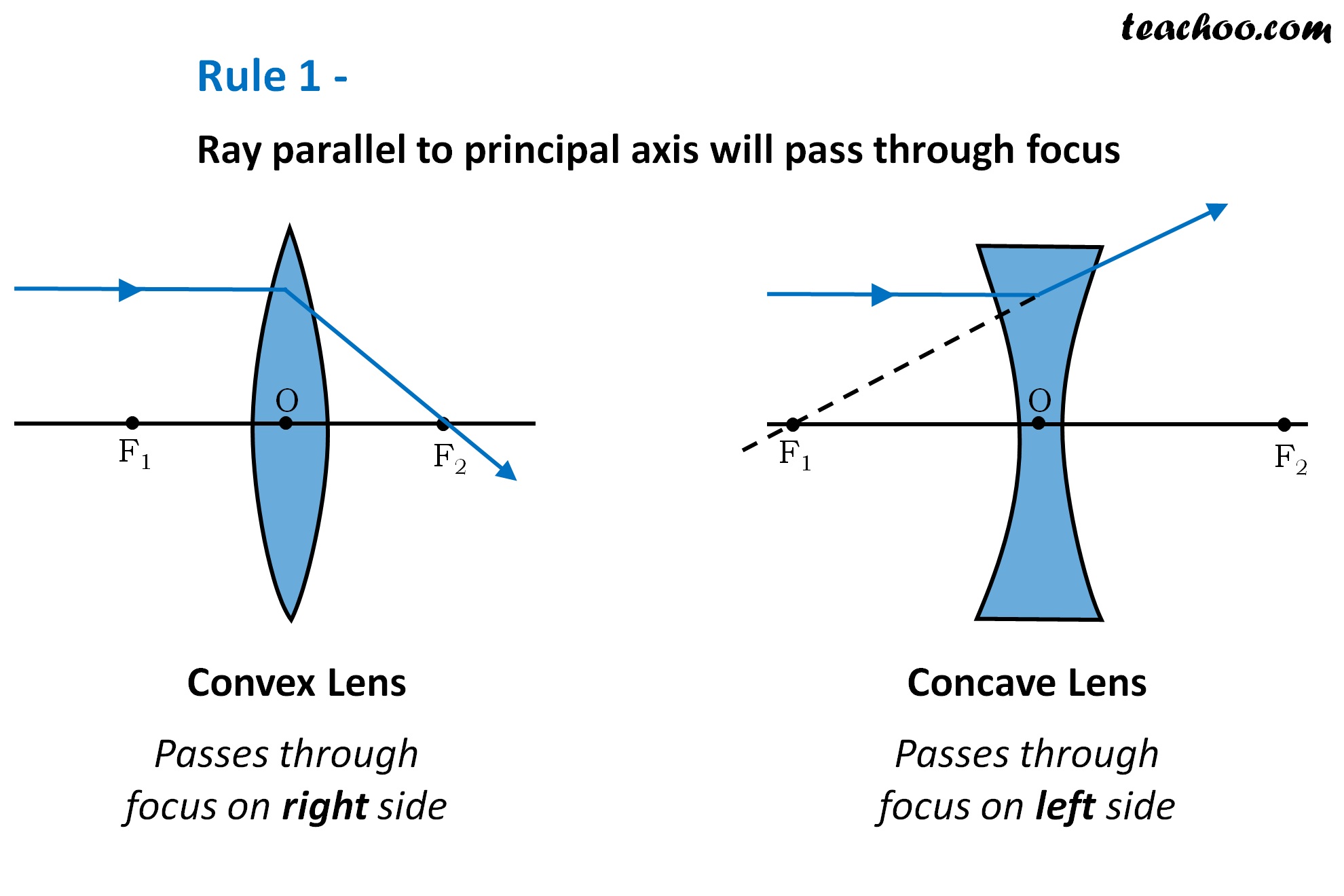
Rules for drawing Ray Diagram in Convex and Concave Lens Teachoo
A completed ray diagram is shown in; The angle in which a light ray hits the mirror is the same angle in which it will be reflected back. If, for example, a light ray leaves the top of an object travelling parallel to the principal axis, it will hit the mirror at a 0 degree angle, and be reflected back at 0 degrees.

PPT Ray Diagrams PowerPoint Presentation, free download ID4089587
A ray diagram for a convex lens is composed of three principal rays: (1) Ray 1 - A ray is drawn parallel to the principal axis, then refracts and passes through the focal point behind the lens.

Rules for drawing Ray Diagram in Concave and Convex Mirror Teachoo
Ray Diagrams Light is one of the cornerstones of physics. By understanding how light behaves, we have been able to create tools that change the way it travels. Some examples include mirrors and lenses, which we combine to make telescopes for studying distant stars or microscopes to observe life at the microscopic level.